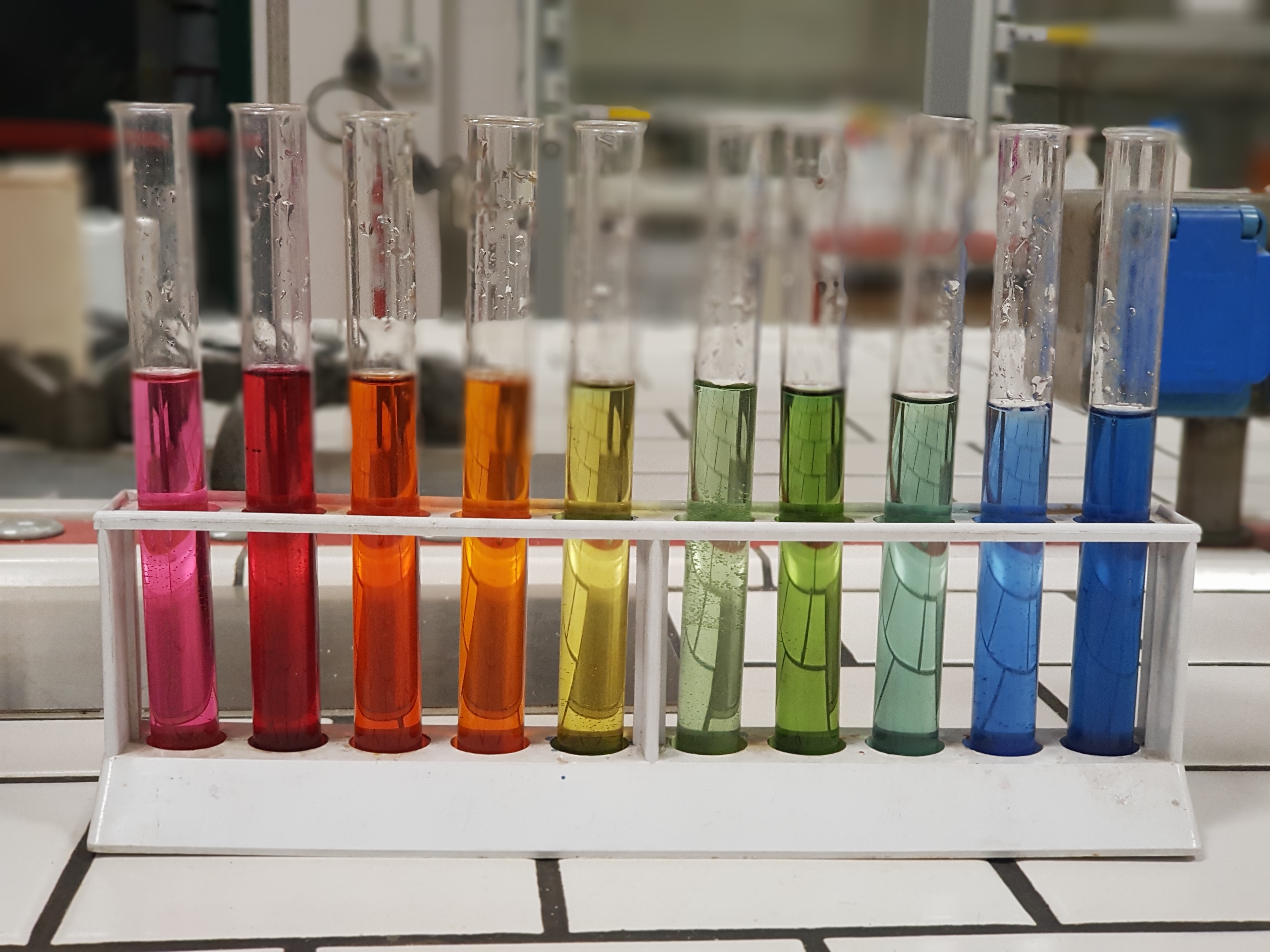PH
 In chemistry, pH ( or ; or ) is a logarithmic scale used to specify the acidity or basicity of aqueous solutions. Acidic solutions (solutions with higher concentrations of hydrogen () cations) are measured to have lower pH values than basic or alkaline solutions. While the origin of the symbol 'pH' can be traced back to its original inventor, and the 'H' refers clearly to hydrogen, the exact original meaning of the letter 'p' in pH is still disputed; it has since acquired a more general technical meaning that is used in numerous other contexts.
In chemistry, pH ( or ; or ) is a logarithmic scale used to specify the acidity or basicity of aqueous solutions. Acidic solutions (solutions with higher concentrations of hydrogen () cations) are measured to have lower pH values than basic or alkaline solutions. While the origin of the symbol 'pH' can be traced back to its original inventor, and the 'H' refers clearly to hydrogen, the exact original meaning of the letter 'p' in pH is still disputed; it has since acquired a more general technical meaning that is used in numerous other contexts.The pH scale is logarithmic and inversely indicates the activity of hydrogen cations in the solution : where [H+] is the equilibrium molar concentration of H+ (in M = mol/L) in the solution. At 25 °C (77 °F), solutions of which the pH is less than 7 are acidic, and solutions of which the pH is greater than 7 are basic. Solutions with a pH of 7 at 25 °C are neutral (i.e. have the same concentration of H+ ions as OH− ions, i.e. the same as pure water). The neutral value of the pH depends on the temperature and is lower than 7 if the temperature increases above 25 °C. The pH range is commonly given as zero to 14, but a pH value can be less than 0 for very concentrated strong acids or greater than 14 for very concentrated strong bases.
The pH scale is traceable to a set of standard solutions whose pH is established by international agreement. Primary pH standard values are determined using a concentration cell with transference by measuring the potential difference between a hydrogen electrode and a standard electrode such as the silver chloride electrode. The pH of aqueous solutions can be measured with a glass electrode and a pH meter or a color-changing indicator. Measurements of pH are important in chemistry, agronomy, medicine, water treatment, and many other applications. Provided by Wikipedia
-
1Classmark: S III 1323Article
-
2
-
3Published 1912Other Authors: “…Stauff, Ph…”
Classmark: V 0386Book -
4
-
5Published 2006Classmark: S I 2105Book
-
6Published 1998Classmark: V 1270Book
-
7
-
8
-
9
-
10
-
11
-
12
-
13Classmark: S I 1141Article
-
14
-
15
-
16
-
17
-
18Classmark: S III 1323Article
-
19
-
20


